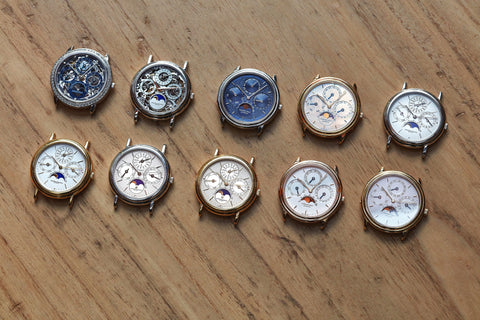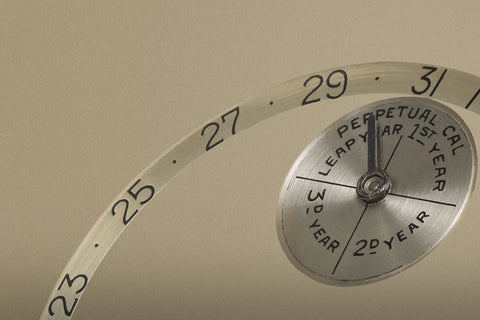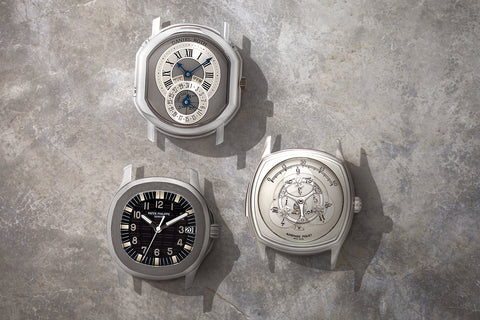One of the few ultra-thin, automatic perpetual calendars put forth by the Holy Trinity, this Vacheron Constantin reference 43031 possesses a significant history and is an excellent example of the combination of modern and traditional elements that characterises the neo-vintage period.
Over the years, the reference 43031 has been produced in a variety of dial, metal, and bracelet configurations, and these pieces are a testament to the brand’s successful weathering of the Quartz Crisis, helping revive public interest in complicated watchmaking. After a successful run, the reference was discontinued in 2002, to make way for the manufacturer’s contemporary pieces.
While most examples of the reference 43031 feature a white opaline dial, this particular piece have a delicate champagne colour that provides a neo-vintage touch when combined with the yellow-gold case. Of course, collectors of vintage pieces will be familiar with the unique appeal of a “tone on tone” watch, where the dial and case subtly complement one another, a feature that certainly makes this piece stand out. These champagne-toned dials are also particularly rare within the reference 43031, as is the case with other perpetual calendars from the period, such as those by Audemars Piguet and Patek Philippe.
Within the watch, Vacheron Constantin used the Jaeger-LeCoultre 920, which was the thinnest automatic movement in the world when it came out in 1967. They then reworked a perpetual calendar module from Dubois-Depraz, a famed module manufacturer who has supplied Patek Philippe, Audemars Piguet and Vacheron Constantin, among others. The end result was the Caliber 1120 QP, which still remains in production to this day, albeit in an updated form.
If sold within the United Kingdom, this Vacheron Constantin 43031 will be subject to 20% VAT.
























































































































































































































